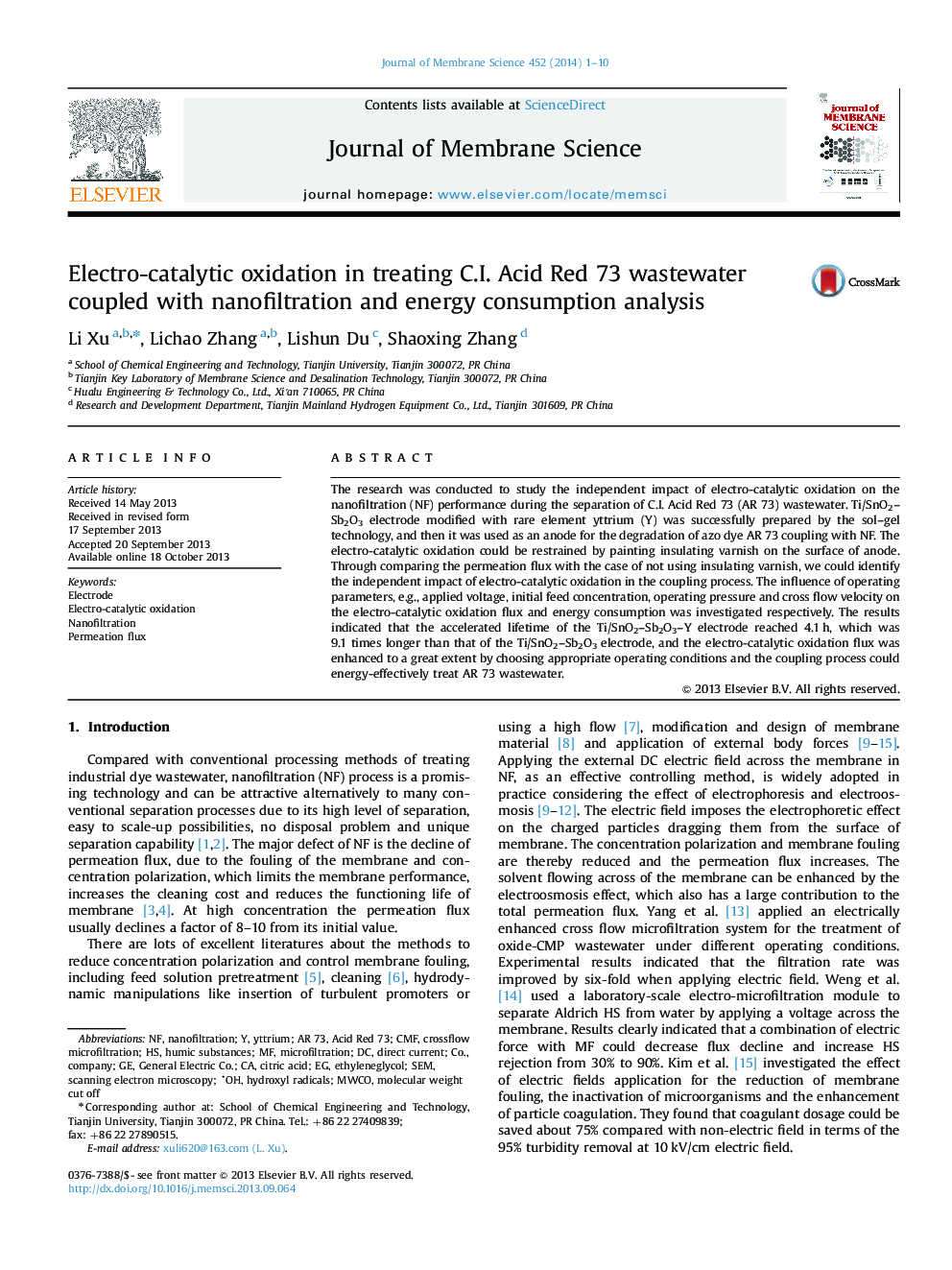| Article ID | Journal | Published Year | Pages | File Type |
|---|---|---|---|---|
| 633685 | Journal of Membrane Science | 2014 | 10 Pages |
Abstract
The research was conducted to study the independent impact of electro-catalytic oxidation on the nanofiltration (NF) performance during the separation of C.I. Acid Red 73 (AR 73) wastewater. Ti/SnO2-Sb2O3 electrode modified with rare element yttrium (Y) was successfully prepared by the sol-gel technology, and then it was used as an anode for the degradation of azo dye AR 73 coupling with NF. The electro-catalytic oxidation could be restrained by painting insulating varnish on the surface of anode. Through comparing the permeation flux with the case of not using insulating varnish, we could identify the independent impact of electro-catalytic oxidation in the coupling process. The influence of operating parameters, e.g., applied voltage, initial feed concentration, operating pressure and cross flow velocity on the electro-catalytic oxidation flux and energy consumption was investigated respectively. The results indicated that the accelerated lifetime of the Ti/SnO2-Sb2O3-Y electrode reached 4.1Â h, which was 9.1 times longer than that of the Ti/SnO2-Sb2O3 electrode, and the electro-catalytic oxidation flux was enhanced to a great extent by choosing appropriate operating conditions and the coupling process could energy-effectively treat AR 73 wastewater.
Keywords
Related Topics
Physical Sciences and Engineering
Chemical Engineering
Filtration and Separation
Authors
Li Xu, Lichao Zhang, Lishun Du, Shaoxing Zhang,
